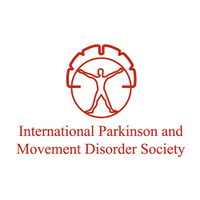
MDS
@movedisorder
MDS is a professional society of clinicians and other healthcare professionals interested in movement disorders.
@MDJ_Journal | @MDCP_Journal
ID:164339610
http://www.movementdisorders.org 08-07-2010 16:48:10
6,2K Tweets
11,9K Followers
297 Following
Follow People

Many rare movement disorders present with a complex combination of symptoms. Gain insight into the process your colleagues leverage and clues they look for to diagnose rare movement disorders.
Watch it on the #MDSCongress Virtual Platform. loom.ly/wZTEn3Q



NEW EXCLUSIVE VIDEO (CME Accredited):
Watch our latest 1:1 expert interview: Levodopa Mythology featuring Alberto J Espay
Direct link: cutt.ly/UNilc0U
#Neurology #Parkinsons #Parkinsons Disease #OruenCNS #Levodopa






The latest issue of Movement Disorders Journal is now available with updates on α-Synuclein, common variants in multiple system atrophy and neuroprotection for HD. loom.ly/6xId3XU




This riveting session contains timely presentations and discussions while we are in the “learning phase” of understanding encephalitis and its relationship with COVID-19.
Watch it on the #MDSCongress Virtual Platform. loom.ly/f_MqR3c


OUT NOW!: Reflections on #Parkinsons Podcast series 2: ABC of #PD . In EP3 Prof Werner Poewe & Prof Bas Bloem look into the letter F and discuss – #Fluctuations & #Fatigue .
All links to stream can be found here: cutt.ly/FBLEL8u
Parkinson's Europe MDS













